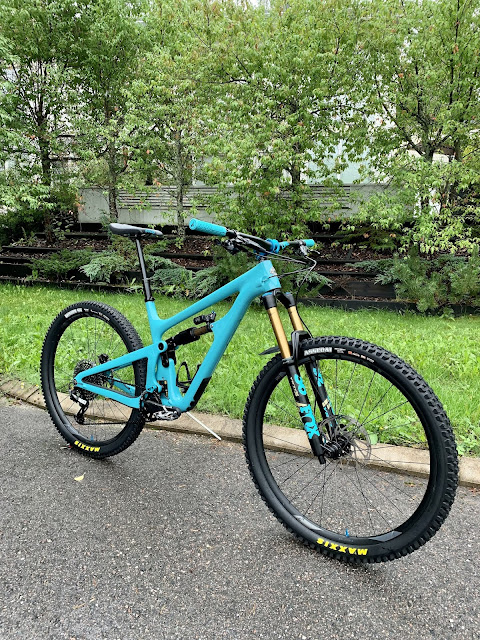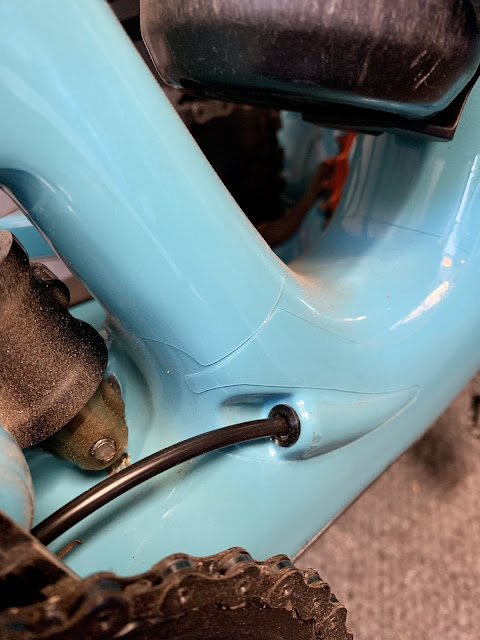I recently received a replacement frame under warranty from Yeti. This process was quite easy for the consumer and Yeti seem to hold up to their promise of a lifetime warranty for the first owner. Thanks!
Yeti no longer stock the 2019 color schemes, so I received both new front and rear triangles. This post is to go through the differences between the 2019 and 2021 frames, apart from the obvious which are the colors. The differences are only in the carbon triangles as warranty frames from Yeti don't come with any of the linkage components.
Maybe not a model year improvement, but the alignment of the PressFit bottom bracket was absolutely spot-on on my new frame, whereas on the old one you could feel slight resistance when spinning the cranks even with a brand new BB.
Front triangle
The front triangle has largely remained the same and even the weights are very close the same, but 2 things seem to have been fixed:
- The cable routing apertures where the cables exit the frame close to the BB would wear down on the 2019. A problem, which I have documented HERE. These now have metal inserts to prevent the cables from wearing through the carbon.
- The problem with the main pivot being too narrow on the frame and causing the pivot bearings to bind, a problem I have documented HERE, seems to have been fixed. Upon measuring my frame it came in at a perfect 33mm width, where as the space between the bearing races installed in the rocker link came to 33.1mm. This, I think, is within acceptable limits considering the manufacturing methods. I still decided to shim mine with a single 0.1mm thick DIN988 15mm ID shim to make it perfect, but the excessive 0,3mm clearance on the 2019 frame seems to have been fixed!
Rear triangle
- Immediately just feeling the part and bending it, you can feel the new triangle is stiffer.
- Drain holes have been added to the rear bottom part of the chain stays - a Problem with the older part as it would collect water
- The weight has increased from approx. 850g to 900g, which is likely due to Yeti adding more carbon to the layup and thus increasing the stiffness of the part.




Comments
Post a Comment